11 Types of Willow Trees to Provide Shade & Enhance Your Yard
Author: Rick Worst | Editor: Omar Alonso
Review & Research: Jen Worst & Chris Miller

There was a time when we didn’t even know these existed, let alone hundreds of types of willow trees. So when you realize that there are 400 species of willow trees and shrubs, you get overwhelmed and realize there's no point in trying to check them all out.
What we can do is show you the most popular, due to their resilience, appearance, maintenance needs, and how much shade they can provide. Looking at the top 11 types will help you find what you need.
Willow trees are mostly from the temperate areas of the north. They are invaluable when it comes to providing shade, erosion control and, of course, timber. Some elements used to make painkillers are also extracted from willows.
Now, most of them have narrow leaves and catkins. And their seeds have long and silky hair. The largest of all the willow species (black, crack, and white) all grow up to 20 meters in height and are found in lowlands.
They are very common from Mexico to Chile. The twigs of some willow species are even used to make baskets in Europe. The uses stretch far beyond yard decoration.
11 Types of Willow Trees: The Most Popular
Obviously, we can’t cover all 400 species here but this is a great start. Let’s take a look at some of the top willow species.
Bebb Willow
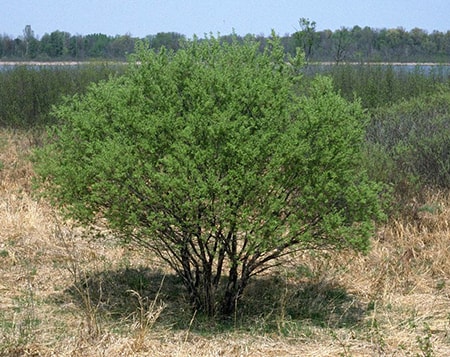
Bebb willow is a small tree that grows along lakes, streams, and bogs. It is multi-stemmed and is a dominant species in the wetlands of North America.
This tree is of great use for woodwork and securing river banks. Naturally, it is not greatly used for landscaping because of its short lifespan and the fact that it is prone to damage by insects. But it is drought tolerant.
Bebb willow is also known as beaked willow, gray willow, diamond willow among other names. It is known to hybridize easily which makes it difficult to identify it. It is native to the northern part of North America and grows from 10 to 30 feet tall.
Corkscrew Willow
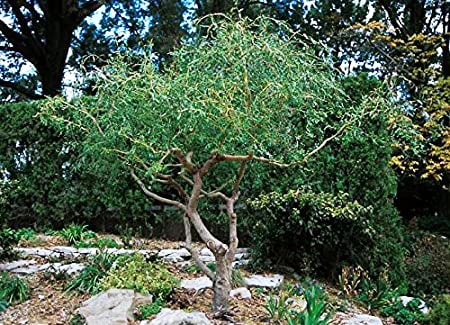
Corkscrew willow has twisting branches and grows to the size of a full tree rather than a shrub, like some other varieties. It is used in floral arrangements and as bonsai too. They're beautiful and you'll want to keep them around forever, so you'll want to know how to save a dying tree if needed.
It is also known as curly willow, globe willow, Pekin willow and twisted willow. It is closely related to the weeping willow species and is considered to be naturally recurring. It is native to northeastern China and grows from 20 to 50 feet tall.
Narrowleaf Willow
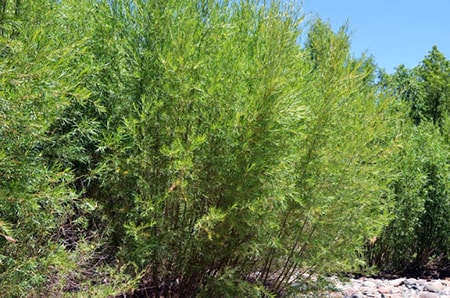
This one is also called coyote willow and grows like a shrub. It is used in building materials and flexible poles. You will also find rustic furniture made of Narrowleaf willow thanks to its gray color and furrowed bark.
It is considered endangered or threatened in some parts of the US and is called by different names like dusky willow or gray willow in different parts of North America and the US. It is also used as an ornamental tree sometimes.
It is great with different weather conditions including droughts and floods. It is native to all of North America and is found from Alaska to Louisiana. It grows anywhere from 6 to 15 feet tall.
Dappled Willow
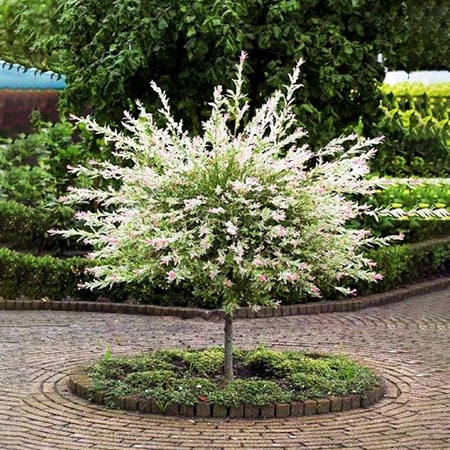
This is a shrub species that is great as a specimen because its leaves are in different shades of pink, green and white. When the leaves first appear they are pink. It then slowly fades to green and as the seasons go by it turns white.
In the winter, you will find the branches turn into a beautiful red color. It grows from multiple stems and is preferred in rain gardens. It is also called variegated willow, Japanese dappled willow, Nishiki willow, and Japanese variegated willow among others.
If you’re looking to buy, you might find it under the name Albomaculata. It is native to Russia, Japan, Korea and parts of China. It grows from four to six feet tall.
Goat Willow
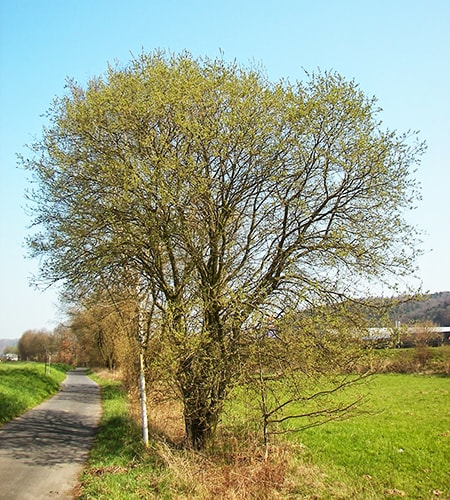
This is one of the many willow species that is also referred to as pussy willow. It is a large shrub that is kept pruned. It is usually grown for hedges and screens. It is also a filler plant in areas with a lot of bogs.
It is quite liked because of its ability to grow attractive-looking catkins. Goat willow does not propagate easily. So both males and females are needed for pollination.
This species is also known regionally by several other names like great sallow, European pussy willow and French pussy willow. It is native to western and central Asia and Europe. It grows from 12 to 30 feet tall.
Peach-Leaf Willow
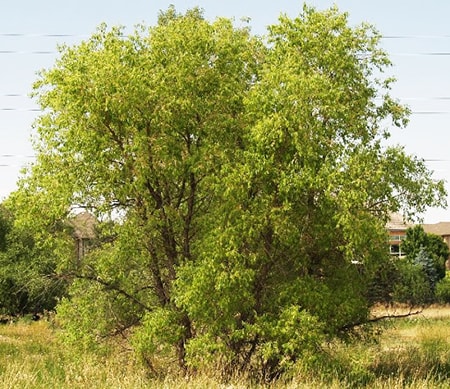
This is called so because its leaves resemble that of a peach tree. And like goat willow, this species is also propagated by seeds. It is a large tree that grows from 30 to 50 feet tall but it does not live long.
It is a great filler tree and is extremely useful in controlling soil erosion. It is naturally found growing along with cottonwood trees. It is also commonly referred to as Wright willow and Almond willow.
Peach-leaf willow is native to North America and the US through southern Canada.
Purple Osier Willow
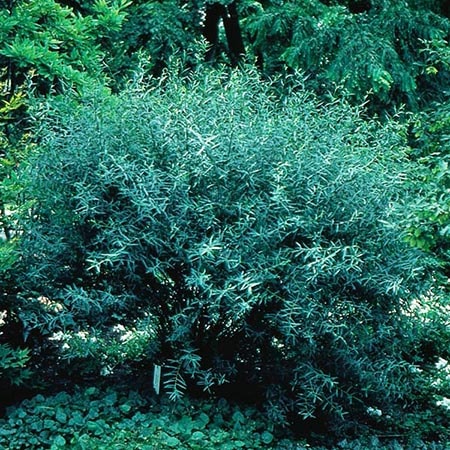
This is an interesting species. It is a shrub with a purple stem and blue and green leaves when it is young. It mostly needs full sun but can manage with some shade and dry soil.
It is mostly planted to control soil erosion along lakes and streams. But it is also makes for good types of hedges. It has beautiful flowers and the stems can be used for arts and crafts.
This species is also used in pain medication because the bark has salicin in it. You may have to cut it back to the ground once in three or five years so that the plant is vigorous and maintains its look. It is, after all, also an ornamental shrub.
It grows from 8 to 15 feet tall and is also called basket willow, Alaska blue willow, purple willow and blue Arctic willow. It is native to Western Asia, Europe and North Africa.
Pussy Willow
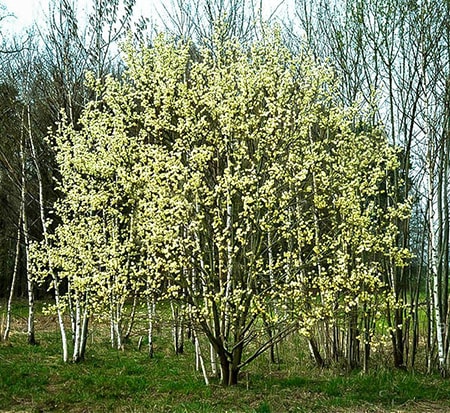
Now, we know that goat willow is also called pussy willow because it is a type like weeping willows. It is an American species and is commonly used in floral designs.
So naturally, it is used in landscaping and hedged and rain gardens. However, unlike the goat willow, this type of willows have a thicket. There are multiple stems from the ground that eventually take the shape of a small tree with a central stem.
It is also called glaucous willow, large pussy willow, American pussy willow and American willow. It is native to North America, Canada and the central US. It grows from 2 to 25 feet tall depending on the specific species. It needs full sun but can manage with partial sun too.
Scouler's Willow
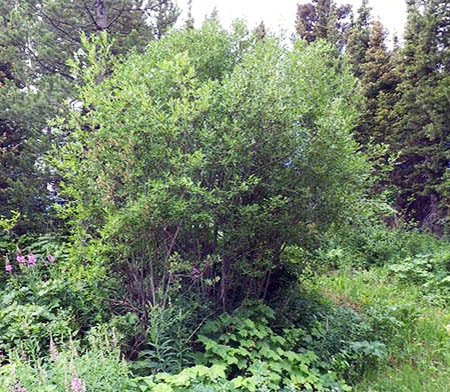
This one has multiple stems and can tolerate dry conditions a lot better than most other willow species. This is a type of diamond willow which is known for carving.
It was discovered by the Scottish naturalist John Scouler. It is used as a hedge sometimes and to control soil erosion next to a water body. But it can be invasive in the sense that it quickly takes over a landscape if there has been a fire or waterlogging.
This species is a great source of vegetation for wildlife like the deer and elk. It is not willing to grow next to other trees which is why it is often found in mixed forests.
It is also called black willow, western pussy willow or fire willow. It is native to parts of North America, from Alaska to the mountain states in the US. It grows from 20 to 50 feet tall.
Weeping Willow
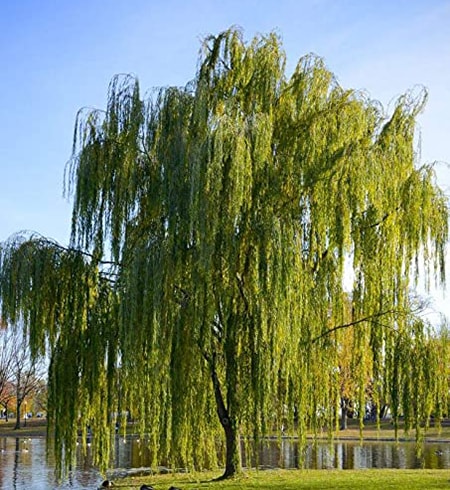
Like the pussy willow, this is also one of the types of willow trees, though it may not resemble them on first glance. It is known for its use in landscaping because it is great on the edges of small water bodies like lakes and ponds.
But it has been known to be a part of larger landscapes too. The branches are delicate and move even when there is just a breeze. So stronger winds might just break them off. So if you’re in tornado central, this might not be the willow to pick.
It does not live long but if you get one of these you will be fine for the next 30 years. They grow from 35 to 50 feet, at a rate of 10 feet every year. It is native to parts of China and needs full sun exposure.
White Willow
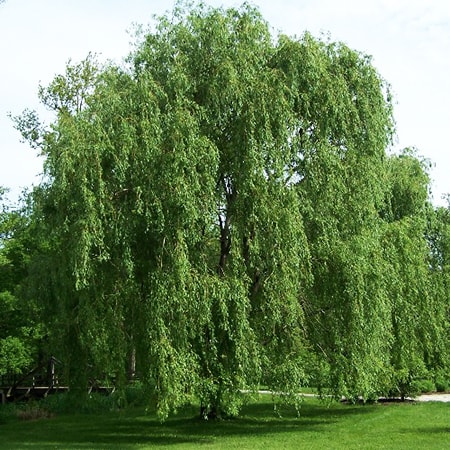
Beware! White willows can be infected by fungi but the leaves naturally are white at the bottom and that’s where the name comes from. It is not great with landscapes because it is huge and weak.
So it needs a lot of space. Salix alba ‘Tristis’ is a popular variety of white willows and is sold as golden weeping willow. It is used to weave baskets and it grows fast too.
The Types of Willow Trees are Many
If you are looking to get one of these, here’s the bottom line. There are many varieties of willows, starting with pussy willow and weeping willow.
You can get a shrub or bonsai version, too. They are great ornamental trees because of how beautiful they are. Some of them can certainly be useful too, but that all depends on which of the types of willow trees you choose.



